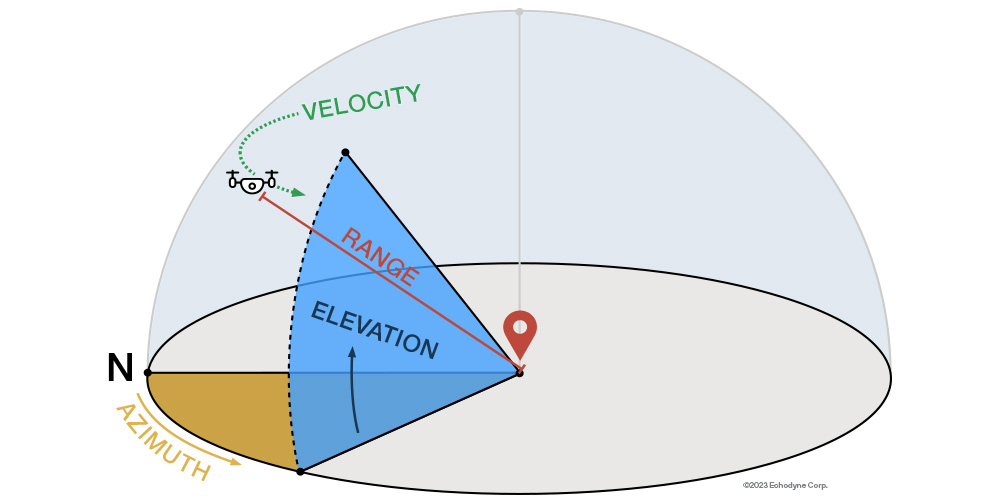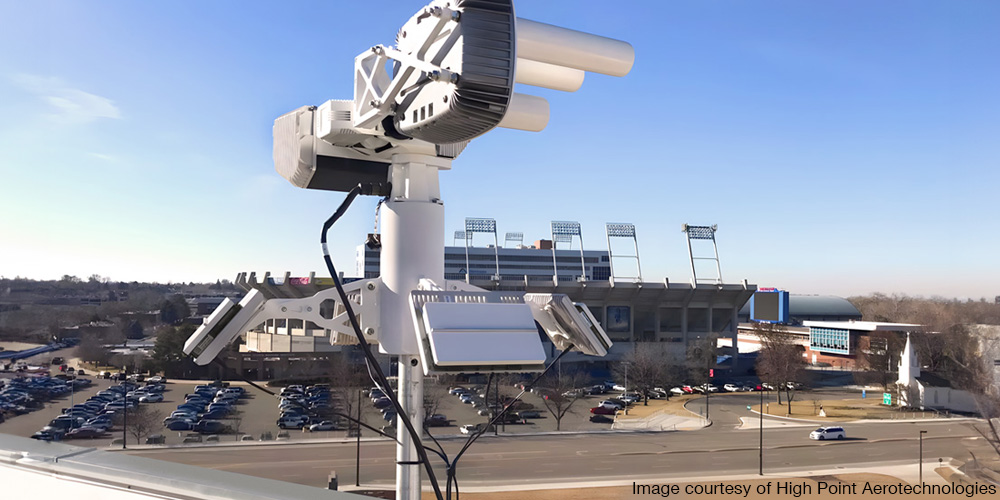Five Reasons to Use Radar for Perimeter Intrusion Detection
With drone usage rapidly growing, many sites that have historically relied on fixed cameras are finding themselves with security gaps. Camera-centered solutions are no longer sufficient for providing comprehensive threat detection at critical infrastructure sites including utilities, nuclear, transportation, correctional facilities, and others. When considering cameras, RF, acoustic, and radar, it’s clear that each sensor has a role to play. This is why a layered security solution provides optimal situational awareness at the perimeter.
A critical element of this stacked solution is radar. High-performance radar delivers precision threat location data and serves as the baseline sensor that drives, complements, and optimizes other sensors in the stack. Below are five reasons why you should strongly consider incorporating radar into your layered perimeter intrusion detection solution.
1. Radar is a 24/7 All-Weather Detector
Many perimeter security solutions rely on cameras for threat detection. However, for optimal operations, most security cameras require good weather and daylight. As weather and lighting conditions change, the effectiveness of cameras diminishes – and in some cases, diminishes markedly. Extended or night visibility cameras may be part of a system and may also struggle to retain a lock on a fast-moving aerial target. Even on ideal sunny days, pan-tilt-zoom (PTZ) cameras may have issues tracking objects. For example, if a PTZ is tracking a white drone passing by a white cloud, the camera may lose track of the drone due to diminished color contrast.
Since radar uses electromagnetic waves (EWs) that are pulsed and received rather than light waves or imaging technology, radar systems can still accurately detect ground and airborne objects even under adverse weather and lighting conditions including diminished contrast. And when radar is used to cue a camera (standard, thermal, infrared PTZ), the radar will maintain lock on the object and provide the camera with continuous data to maintain target lock.
2. Radar Does Not Rely on RF Signal Detection
As the threat landscape evolves and drones are more prevalent, security teams are realizing that drones can be disruptive to operations and safety, whether clueless, careless, or criminal. Unlike other limited technologies, radar detects everything that moves within the field of view.
Radio Frequency (RF) tools have been the primary drone detection method and for good reason. These tools scan the unlicensed spectrum where drones communicate with the operator, with many relying on a library of electronic capabilities for interdicting drone operation. In a market where one company, DJI, had 90+% share, and all communications is in unlicensed spectrum, interdicting drones is relatively straightforward.
The technology landscape evolves rapidly. There are dozens of drone manufacturers, each with new capabilities for niche markets. Communications options have matured for drone operators with choices outside any RF tool’s domain. Operators can turn to You Tube for guidance on shielding drones from these RF tools, using frequencies outside of the RF platform’s capabilities, or use licensed spectrum services where RF tools have no jurisdiction. Referred to as “dark” or “silent”, these drones are not detectable by RF tools.
Today, there are many options for masking or eliminating the electronic signal between operator and drone. The changes in how drones navigate the airspace make it difficult for yesterday’s favored solution to detect and track these drones.
Radar remains the obvious choice for detecting and tracking all movement in the airspace, regardless of communications or capabilities. Radar is the only sensor that detects all drones, 24/7.
3. Radar Can Detect Multiple Threats in All Domains
Until recently, high-risk and high-security sites were primarily concerned with threats approaching by ground – on foot or by vehicle. For many sites, this is no longer sufficient. Drones adds airspace monitoring requirements, and detecting and tracking a small, fast-moving aircraft is not simple. Perimeter surveillance of ground and air requires multiple sensors and a robust command and control (C2) layer, with radar as the foundation sensor.
Multi-domain radar detects and tracks all movement on the ground, in the air, or arriving by water’s edge, providing comprehensive three-dimensional (3D) perimeter surveillance. Unlike conventional radar for security which typically detects in one domain better than another, new metamaterials electronically scanned array (MESA) radar detects both ground and air intrusion from a single panel and has a detection range and accuracy that is much greater than other radars in its weight class. For security organizations building solutions that stand up to the changing threat landscape, MESA radar delivers efficiency, accuracy, and dependability across all security domains.
4. Acquire Better Baseline Data with Radar
Radar detects and tracks movement, providing a data-rich foundation for security systems. At a minimum, radar provides these key data elements:
-
- Precise location
- Object size, referred to as the radar cross section (RCS)
- Orientation, direction, and velocity
Capturing this data allows secondary sensors, such as cameras, to be slewed to the coordinates delivered from the radar. This enables security operations to identify potential threats quickly, accurately, and with maximum response time. Forensic analysis and any law enforcement action against intruders will rely on radar’s precise location and object characteristics fused with video recordings as key elements in the evidentiary record.
5. Radar is a Force Multiplier for Other Sensors in a Layered Security Solution
In multi-sensor systems, where the action of one component is dependent on the data derived from a sensor ahead of it in the data chain, it’s important that high-fidelity data is available throughout the system. Better sensors make for better performing security systems.
With high-fidelity radar data as the baseline, there are many ways layered security solutions are enhanced. First, threats can be detected at greater distances than what is possible with the human eye or many camera types, providing security teams more time to respond. Second, security teams can use existing or lower-cost camera equipment that can be driven by radar data. When paired with the right video analytics platform, MESA radar boosts operational effectiveness by providing dual verification of the target data AND by cuing a camera for eye’s-on confirmation of the threat at distance beyond that which the human eye can view.
Broader coverage with fewer devices is also possible. For example, if a site has historically placed static cameras at 20-foot intervals along a fence line for defensive coverage, they can likely move to a radar + PTZ camera solution and use fewer devices. Additionally, for solution stacks that include RF sensors, radar can help resolve false RF detection alarms caused by the overabundance of noise emitted by devices such as cell phones or baby monitors (which is especially common when systems are used in densely populated areas).
As security teams assess risk and consider solutions sets, a precision sensor that detects all threats, 24/7 is key for optimal situational awareness. Radar is this sensor.





